Electric aviation: High hopes, low battery.
Unravelling the contradictions of electric flight.
Doot-deet-doot-deet!
My drone waits a moment, listening to the whisper of GPS satellites, then casts skywards with a swarmlike buzz, ruffling the summer grass. Can flight really be this easy?
I swoop over and past an old monastery, snapping pictures and filming its stubby, tumbledown spire against the backdrop of the Galtee mountains. The little drone reacts with smooth, programmed grace. A faint buzz fills the air, appropriate for the insect-filled May afternoon.
Eventually, batteries running low and guilt running higher I land the little aircraft, fold it away and climb into the car to get back to my family. I press the ignition and a hundred moving parts jerk into life with the characteristic cough & rattle of a Ford diesel. Fans spin, oil flows, heaters glow and cylinders fire as the car pulls away and heads for home over grass-spined country lanes. Not for the first time I contrast the noise and barbarism of internal combustion with the simplicity of electricity.
Overhead, a single contrail cuts the blue in two and I think…
Could we ever fly that way?
1: Inconvenient electric.
There are difficulties inherent in electricity, such as how to store it. My little drone, miracle of technology that it is, weighs a little under one pound, most of which is battery. It can fly about 20 minutes on a full charge, maybe a little more in good conditions and a little less if you hover, for sound aerodynamic reasons I shan't go into right now. It's plenty enough time for capturing pictures from something small enough to fit in a pocket.
But if that 200 grams of battery was instead diesel in my Ford Mondeo, it would propel a ton and a half of car plus me and my belongings for up to 5 kilometres, or 3 miles.
OK, it's nor a fair comparison for many reasons, but it points to a vast specific energy gulf between batteries and petrochemicals. Specifically for aircraft, kerosene has 48 times the specific energy (energy per kg) of a good lithium-ion battery: An unbridgeable gulf for electric aviation?
Maybe.
A few years ago, Rolls-Royce (who else?) flew the Spirit of Innovation battery electric demonstrator, which promptly broke multiple records for electric flight, including climb and top speed: A 345 mph average was clocked by this slippery customer!
Definitely less Nissan Leaf and more Tesla Ludicrous Mode, this one. It looks the part too, with its weirdly curved-back wings making it look like a Dick Dastardly creation rendered in chrome by ChatGPT.
All very impressive, but it's not going to fly you overseas anytime soon. Indeed, try to equip a 737 for pure electric flight and get from, say, Gatwick Airport in London to the Canary Islands and you'd be lucky to clear the English channel. That specific energy gulf is just too large.
But that's not the whole story, for there are certain niches that electric aviation can fill, and that 48-to-1 specific energy gulf isn't actually as wide as it seems.
Engage your cynicism, but bear with me…
2: Airborne Über
The news has come thick & fast in this sector. Only a year and a half ago, Chinese company EHang got the world's first airworthiness certificate for an autonomous flying electric taxi, with their dronelike EH216-S. Dubai & Abu-Dhabi, neighbouring Emirates with equivalent egos, are competing to launch the world's first air taxi “Vertiport”. Joby Aviation, an electric aviation startup, has in the last few months partnered with Toyota in Japan and Virgin Atlantic in the UK to start air taxi operations. German manufacturer Lilium recently got a 200 million investor lifeline to get it through production and first customer deliveries of its own, unique, electric air taxi system.
Money and investment is no guarantee of success of course: Money can be dumb as well as smart, but I think there's something real here, and we should take it seriously.
Firstly, there are some very worthwhile niches to exploit. Let's take, for example, Manchester & Leeds: Two Northern UK cities in the middle of a vast pool of human potential, under-connected and under-served by road & rail links. Both of these cities have airports, and you can foresee scenarios where moving air crew between them by air taxi could be extremely useful: It's over an hour by road or 15 minutes by air, and while a traditional helicopter is bloody expensive, an electric vehicle need not be, if used intensively and sufficiently automated.
Hell, if electric air taxis became popular enough, the two airports could cooperate and share passengers instead of air crew and be used for connecting flights, strengthening the connectivity and importance of both hubs. It's compelling.
Many new technologies need a high-income niche to subsidise development, and what sports cars were for Tesla, last-mile air taxis could be for electric aviation. There's few higher income sources per passenger-mile, which is why we see the likes of Virgin Atlantic proposing it to get business travellers to Manchester & Heathrow airports.
And what by you can do ferrying pilots you could likewise do with cardiac surgeons, or hospital transfers. Electric air vehicles may not have tremendous range or time over target, but if what you need is fast transit right now within a 100km radius, it could work out.
Please engage your cynicism: If this is such a good idea, why aren't helicopters doing it already?
Firstly, the incremental cost of electric vehicles is lower: Simpler systems, fewer single points of failure, lower cost of fuel and maintenance. This all contributes to a potentially lower cost, higher rate of usage and so better fit to various business models.
Plus, the incredible precision and flexibility of electric vertical takeoff & landing (eVTOL) aircraft, and a comparatively small footprint, means that they can operate in all kinds of places that a regular chopper can't. Perhaps without a pilot.
That could be a hard sell in some jurisdictions, and most eVTOL manufacturers are staying piloted for this reason.
For an example of regulatory stringency, until recently just to fly your common everyday commercial drone beyond visual line of sight in the US required that you apply in advance for a special BVLOS waiver from the Federal Aviation Administration: A process that can take months. This on its own impeded a lot of drone businesses that would otherwise have, um, taken off.
Yet even a casual look at drone videos on YouTube will tell you that BVLOS rules are routinely ignored by recreational drone fliers. I know I've done that in the past and no wonder: Modern drones are highly automated, route-finding, GPS-syncing magic machines peppered with crash-avoidance sensors. They're designed to be used this way.
But it highlights a very real concern, which is that even if the most ardent technological wishes of the air taxi companies are granted, regulators could crush their business models with the stroke of a pen. Which is a shame, because the sector is an incubator of technologies that could benefit the entire aviation sector, even the bits of it that burn kerosene. It could open a whole series of technological gates for us to pass through.
Let's walk through these gates in turn.
3: Hybrid (air)buses.
Electric and internal combustion power-trains are good at different things. It's important to know that in order for hybrid systems, which flick between each powerplant at will, to make sense.
We've already seen the dawn of the hybrid power train become full noon in the automotive sector, but in aviation it's still a novel concept that could yet be enabled by electric powerplants. Why on earth would we want to do this?
Because, just like in cars, an aerospace gas turbine or internal combustion engine has an ideal design point at which it's most efficient, usually at cruise conditions, and outside this (such as at takeoff and climb) the efficiency drops markedly. A hybrid power train uses an energy storage system such as a battery to manage the peaks & troughs so that the engine spends longer at its design point, saving energy over the course of the whole flight.
Good theory. It works for a Prius in town traffic. Does it work for a plane, whose weight limits are much stricter? Maybe.
The extra weight of battery, switchgear, generator/ motor and so-on is considerable, so while hybrids can bring fuel efficiency benefits, it would only be for aircraft that spend a lot of time ascending or descending: Think town cars, not motorway cruisers.
There are a couple of ways to do it, too: A series hybrid layout takes an electric motor as the primary form of propulsion, even for the portion of the flight that is kerosene-fired and so must run through a turbo-generator, absorbing an extra hit on efficiency from this extra step in order to make up for it in ascent, descent and takeoff.
The second way to do it is a parallel hybrid arrangement, which assumes that a mechanical power transmission from the gas turbine will be primary, but an electric motor (or generator) can jump in to assist, governed by a transmission box that decides where the power goes. This setup is similar in principle to the KERS energy storage & boost system on Formula 1 cars. It's less intensively studied for aviation than the series hybrid layout, and thought to be less efficient, due to the gas turbine spending more of its time working in off-design conditions.
Batteries and motors are improving, as we shall see later in this article, so where hybrid aircraft end up is anyone's guess. A few prototypes have flown, but we shouldn't expect commercial use this decade. It's very likely to manifest for regional and short-haul flights eventually though.
Most electric flight concepts depend on electric motors supplanting traditional power systems one way or another, but this new approach needn't be thought of as a bind.
It can actually enable wonders…
4: Distributed propulsion.
In 2023 a strange creation took to the skies in the south of France, near the Spanish border. Dubbed ‘EcoPulse’, it was a parallel hybrid demonstrator aircraft with a quirky special feature: Six small 50kW electrically powered propellors spaced out over the wings. These could either be powered by batteries or an integrated generator, and their purpose was to test a unique propulsion concept.
Distributed propulsion is an interesting way to address a conflict in conventional aerospace design: That fans and props get more efficient as they get bigger (and therefore require lower pressure gradients over the blades), but the expansion of fans & props is limited by ground clearance. Make them really big and the speed of sound at the tips becomes a constraint.
Use multiple small props instead? Then your problem is the poor scaling of gas turbine engines: They get less efficient when you make them smaller.
But electric motors can be shrunk, so you can string out a whole bunch of them and get the benefits of a big prop without the drawbacks. Furthermore you can use them for local aerodynamic benefits: Blown flaps and accelerated airflow over the wing can give benefits in takeoff and landing, allowing wing designs more well optimized for cruising. Boundary layer ingestion & re-energizing can reduce wake energy losses and can provide benefits significant enough that it would provide a 7%-12% fuel efficiency bonus to a medium range airliner even if it used a pure turbo-generator setup with no hybrid power management at all.
Plus, as EcoPulse showed, you can synchronise the props to run in acoustic antiphase with each other, reducing cabin noise. Neat trick!
Distributed propulsion is a high risk airframe change, so don't expect it on big airliners anytime soon, but for electric air taxis, which are a brand new industry with nothing to lose, there's more incentive to be experimental.
See, for example, Lilium's fascinating blown-wing thrust vectoring electric aircraft concept.
Very space age.
5: Inconvenient truths & vital enablers: Motors & batteries.
Let's curb our enthusiasm a bit, and remember how we started. Batteries and kerosene have a 48:1 gulf in specific energy, so while novel aerodynamics may help, only battery and motor advances can make them anything but a short-range novelty.
So where are batteries at, and where can they go?
Firstly, remember that the 48:1 ratio is a little misleading, because the thermodynamic efficiency of an electric motor is over 90%, whereas a traditional gas turbine achieves 55% or so, so the effective usable specific energy ratio between kerosene and Lithium ion batteries is now ‘only’ 29:1.
That stretches the word ‘only’ a bit. We need to improve that ratio for electric air vehicles to have any chance at all.
What can batteries do?
Lithium-ion batteries, the current industry standard, will get you about 250 Watt-hours per kg, or enough in 1 kg of battery to run a kettle for 15 minutes. Some formulations and electrode combinations get a bit more and it's an evolving field, but a big leap is needed.
Lithium-sulphur batteries double that at 500 Wh/kg, and have even powered an electric aircraft, Airbus's remarkable solar powered Zephyr, but they're currently let down by limited lifespan in the region of 1,350 cycles… too little for commercial aviation, but this is improving over time.
Solid state batteries are under development and could bridge that 500-1000 Wh/kg with a fast charging architecture, but we're speculating a bit more here. Lastly there's also lithium air with an expected 1,700 Wh/kg, but it's a long way off and could disappoint.
If we could move beyond the dependable workhorse that is lithium-ion then all kinds of opportunities open up: Take energy density to 1,000 Wh/kg and that energy gulf with kerosene plummets again, down to only 7:1. Still big, and you won't be crossing continents with it, but you could travel regionally on that kind of chemistry.
And, as the burgeoning air taxi industry is demonstrating, even humble old Li-ion batteries have reached the minimum threshold where certain high-margin, intensive-use business models start to become plausible.
Kick the chocks and start the props…
But remember that there's no point improving battery chemistry if the motors don't improve in lockstep: Currently, common commercial electric motors have a power density that is between 1 & 5 kW/ kg, which sounds like a lot but trails behind gas turbines by some distance.
Recently that limit has been broached: Wright Electric tested electric motors in 2021 which managed between 10kW- 13kW per kg on platforms of 250kW and 2MW, which is a usable size for aerospace applications. This kind of wedge opens the electric aviation door further.
And the EU sponsored ASuMED project aims to kick the door wide open with high temperature superconducting motors exceeding 20kW per kg: Extraordinary power densities for extraordinary applications.
Technology likes to surprise us, again and again.
Could the cynicism we show electric aircraft now eventually become just as outdated and fusty as the cynicism we once aimed at electric cars?
It's a hard sell, but stranger things have happened.
6: Wing-borne weirdness.
Last year, when the CityAirbus Nextgen prototype was revealed to the world, I had two reactions: Firstly, “that's an incredibly uninspiring name” and then immediately the second reaction: “Jesus, that looks like something Batman uses to fight sky pirates!”
Even if Airbus has recently gone cold on the idea it's worth a look. As designs go it's quite something, with thrown-forward wings, a hunched, aggressive manner, a V-tail and scallops on the wing trailing edge for propwash that, of course, makes it look like it has bat-wings.
Whatever your flavour of optimism or cynicism, electric flight is exciting because it forces us to push past our comfort zones and experiment with the truly Weird.
In short, the colossal specific energy gulf between liquid fuel and batteries forces battery flight to experiment with architectures that simply wouldn't occur with conservative, commercially-conscious kerosene combustors.
Try saying that five times fast.
Even the less comic-book inspired design from Joby Aviation, which lest we forget is going into partnership with Virgin for airport transfers, is still pretty incredible. Like many air taxi concepts it combines an insectile sci-fi aesthetic with a festishization of the common everyday propellor.
And both of these, the crime-fighting Airbus and the insectile Joby, look tame in comparison with Lilium's e-taxi concept from Germany, which combines a dual tilt-wing design with distributed podded propulsors running the length of the wings, with clear boundary layer ingestion potential: Quieten down, aerodynamicists in the back row!
A need for active full authority control, combined with safety-through-redundancy and a pressing need to cross the specific energy canyon has yielded a loosening of design convention that would put abstract artists to shame.
And, whisper it now, this is where I think electric aviation's biggest triumph lies…
Battery powered flight might live or perish. It might even live a brief, glorious Mayfly day and then die gloriously, but even if that happens it will be worth it, because it will shatter the convention-strewn realities of the aerospace sector.
I don't want to dismiss innovation in aerospace: I lived that world and know the huge efforts behind the scenes, but to everyone else it looks like there is design stasis. The world's airports are filled with a beige homogeny of tube-and-wing standard designs, so to glory in this world is to be a connoisseur of tiny differences.
Wouldn't it be good to shatter that?
The tube and wing won't go away anytime soon, but nothing leads as well as example, so maybe a leap over the specific energy canyon will inspire a few brave pioneers to do just that.
In which case, Vive La Révolution I guess. Let's cross the canyon together.
But first, I need to charge my taxi.
The Infinity Fuel
Hydrogen. What images does that word conjure up? If you’re a normal person then let’s be honest, it’s probably a giant flaming airship crashing hideously, its metal framework collapsing like a colossal ribcage. It’s not a friendly image.
Figures and data used in this article come from the downloadable research papers Recent Advances in Airframe Propulsion Concepts With Distributed Propulsion, A.T Isikveren/ Electric Aviation: A review of technologies and enabling technologies, Bright Appiah Adu-Gyamfi.




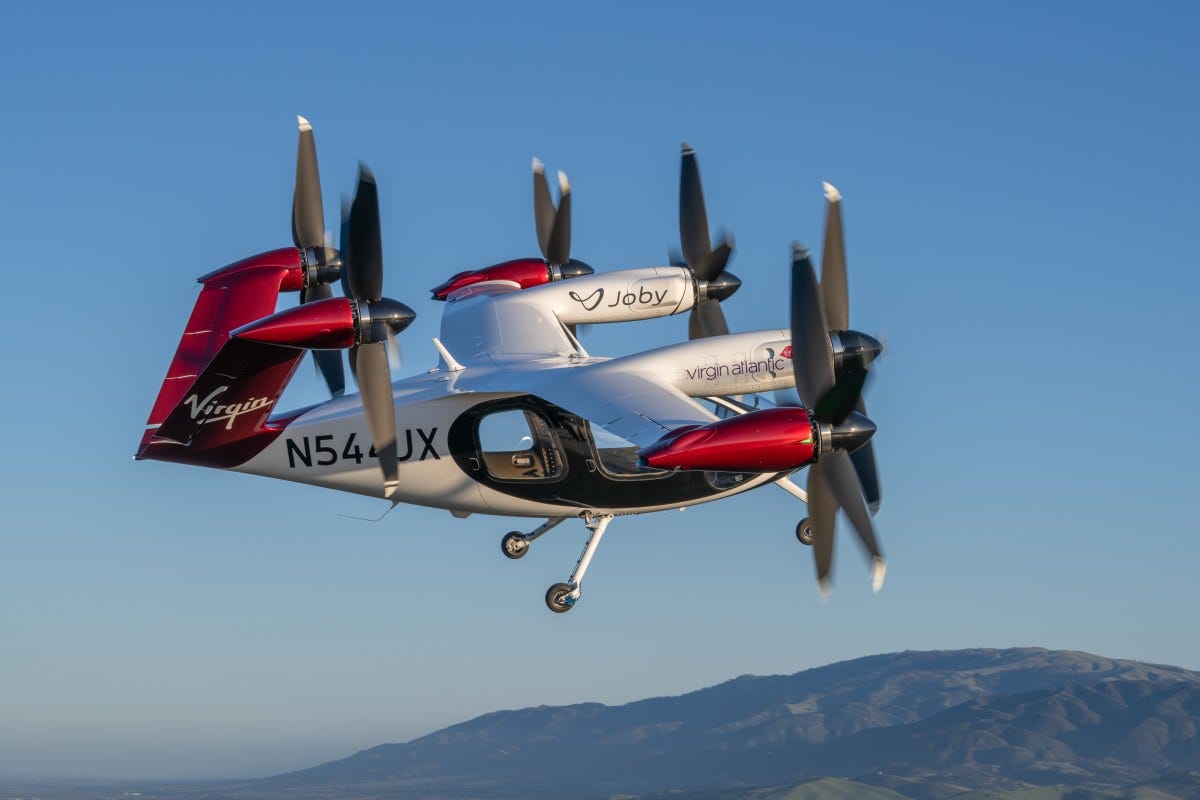

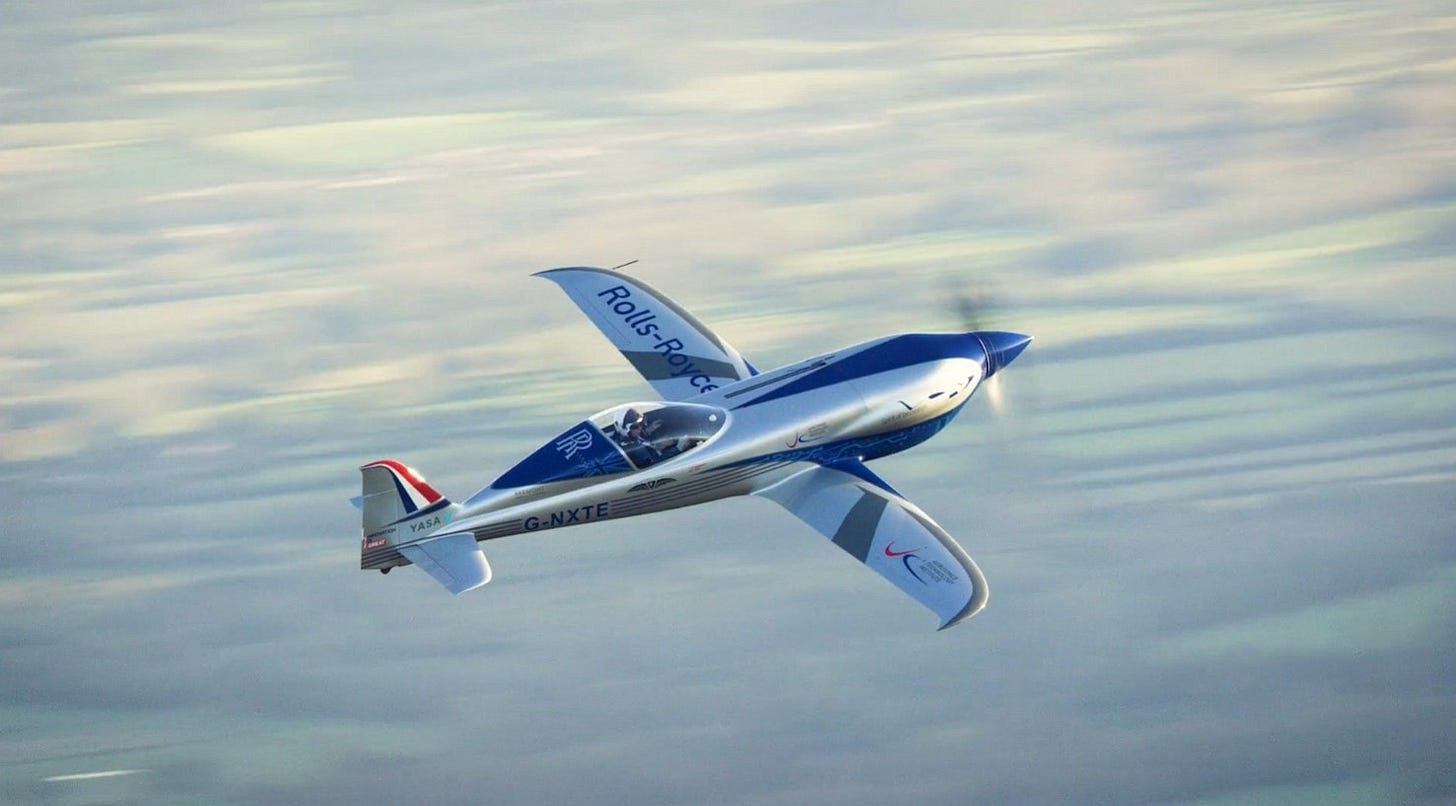

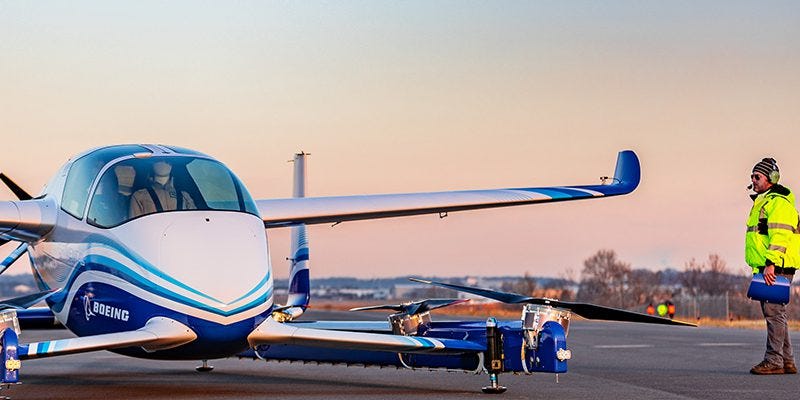
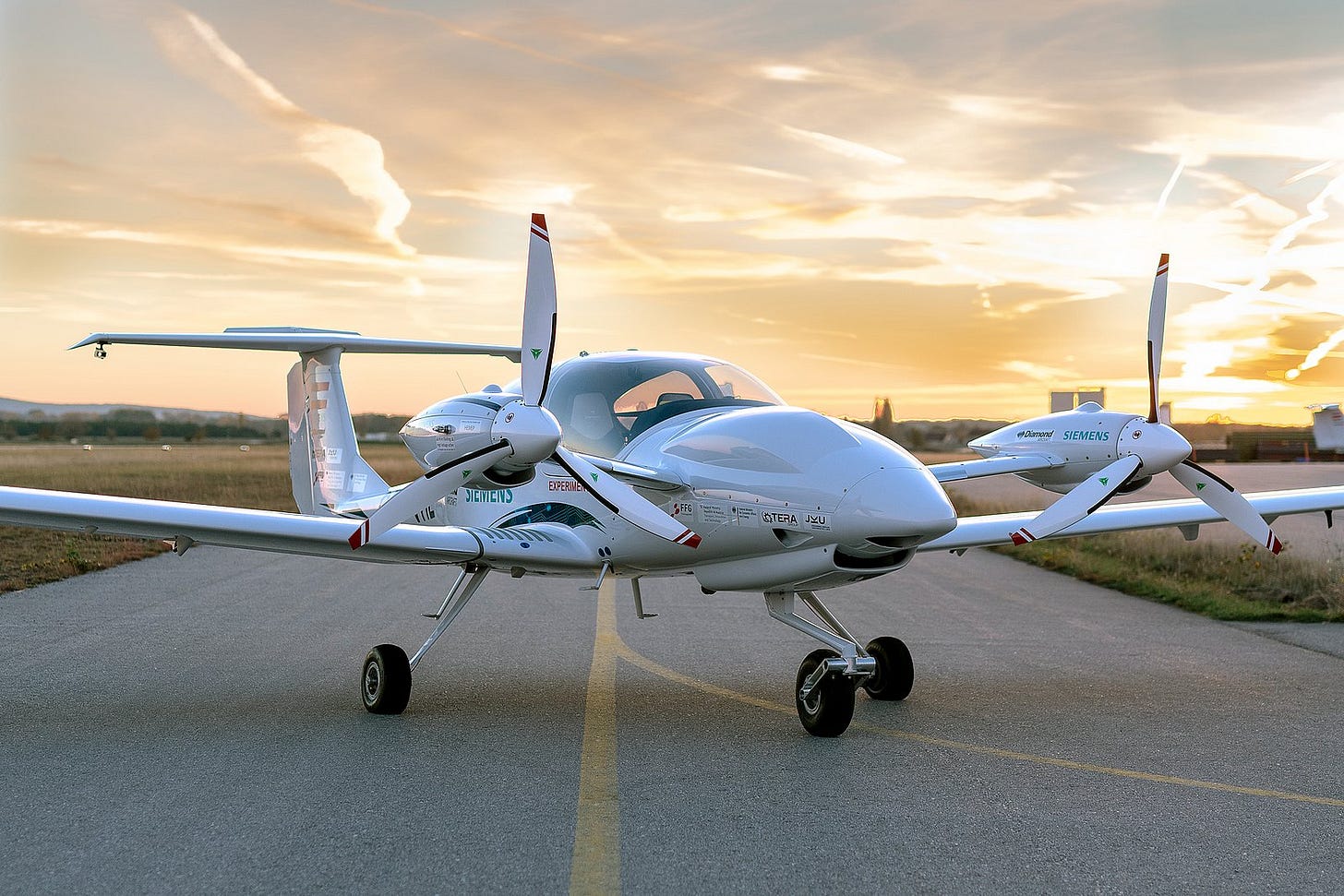

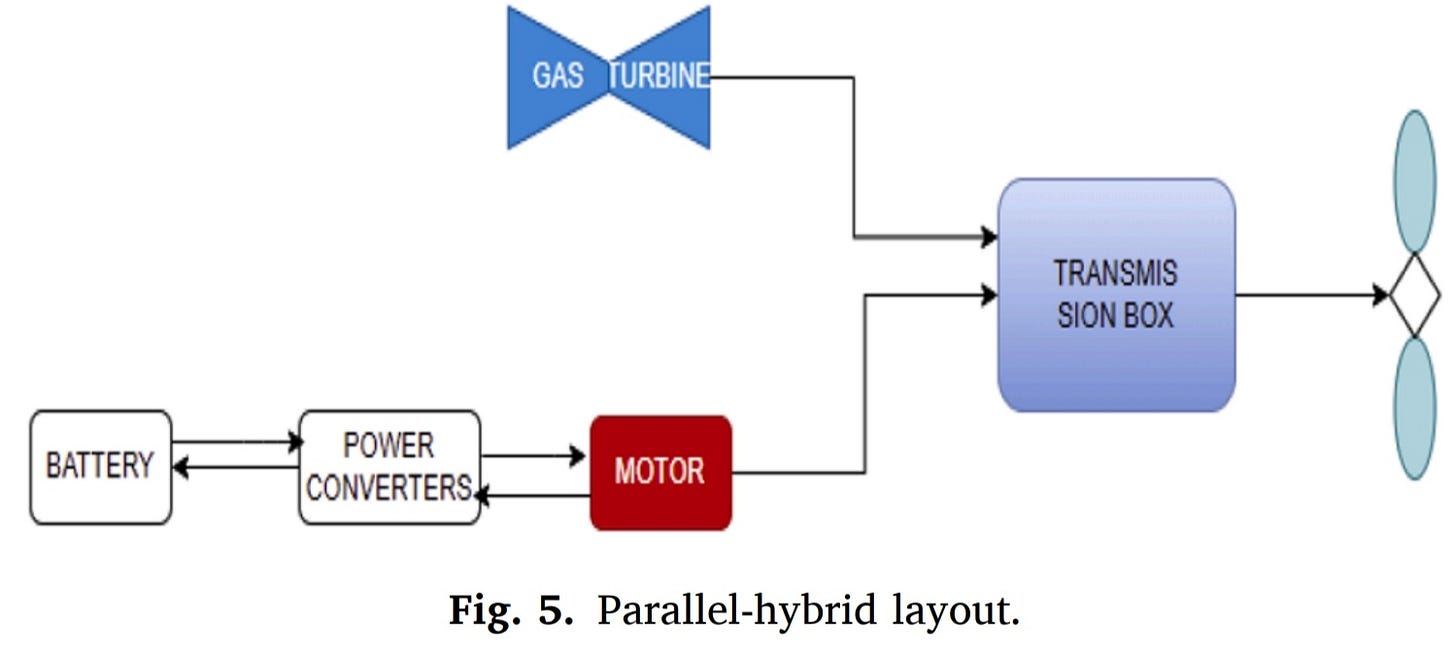

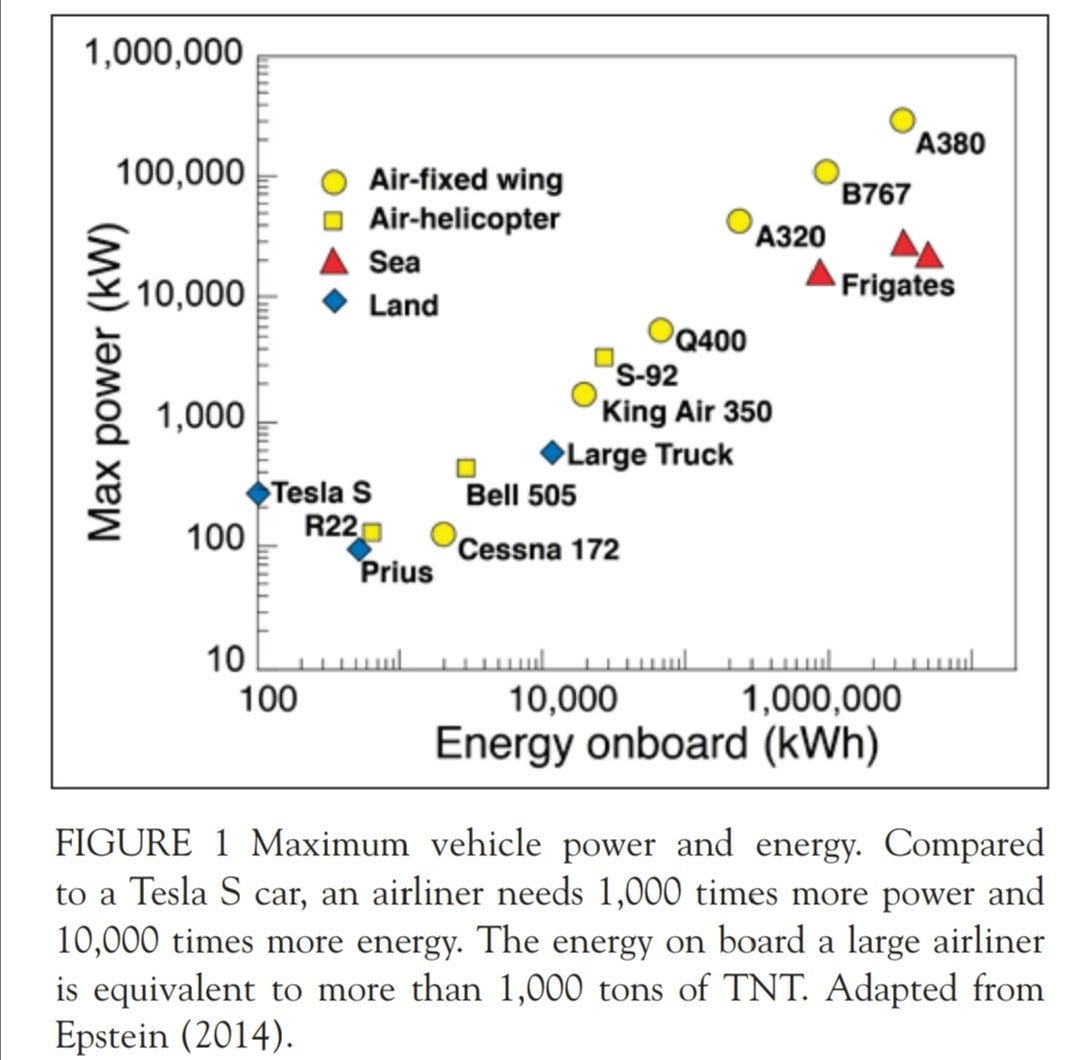
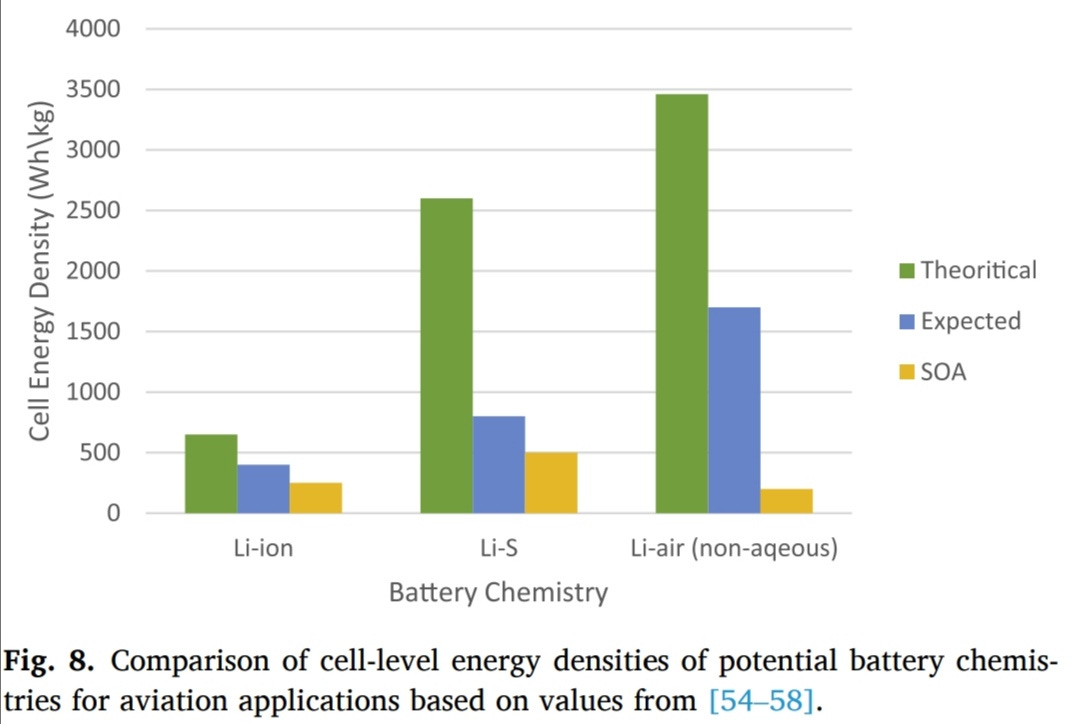
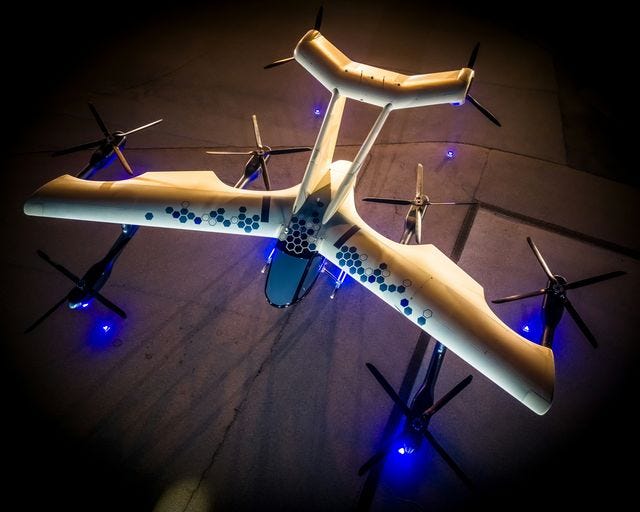
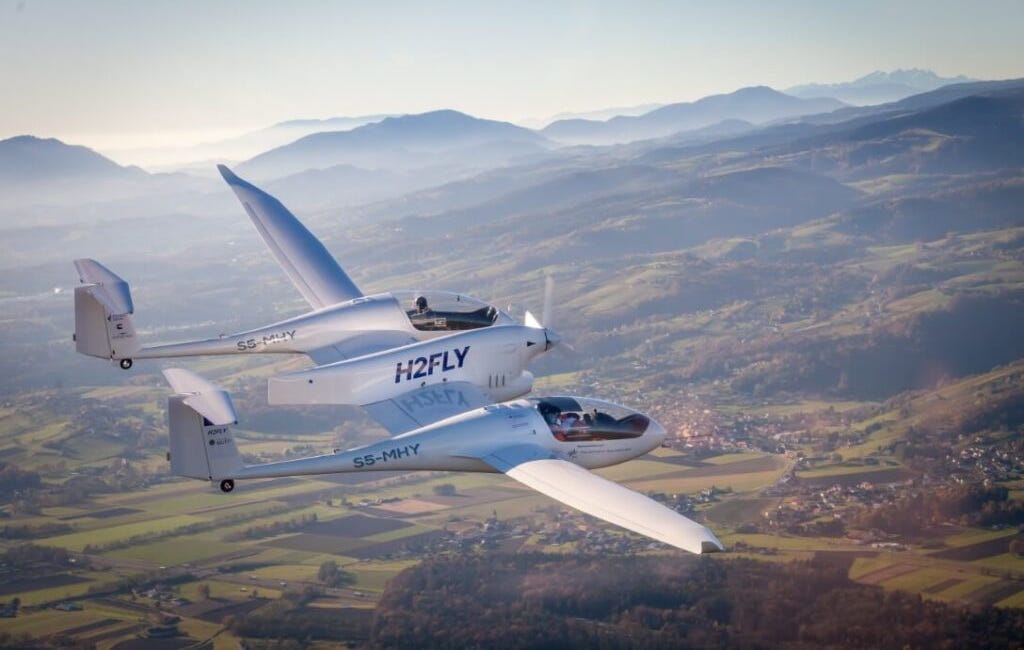
Fascinating, in-depth analysis of electric powered flight and battery technology.
Interesting! We invite you to watch our latest episode, where we discuss electric vehicles and the future of mobility 📺https://bit.ly/43Az6X8